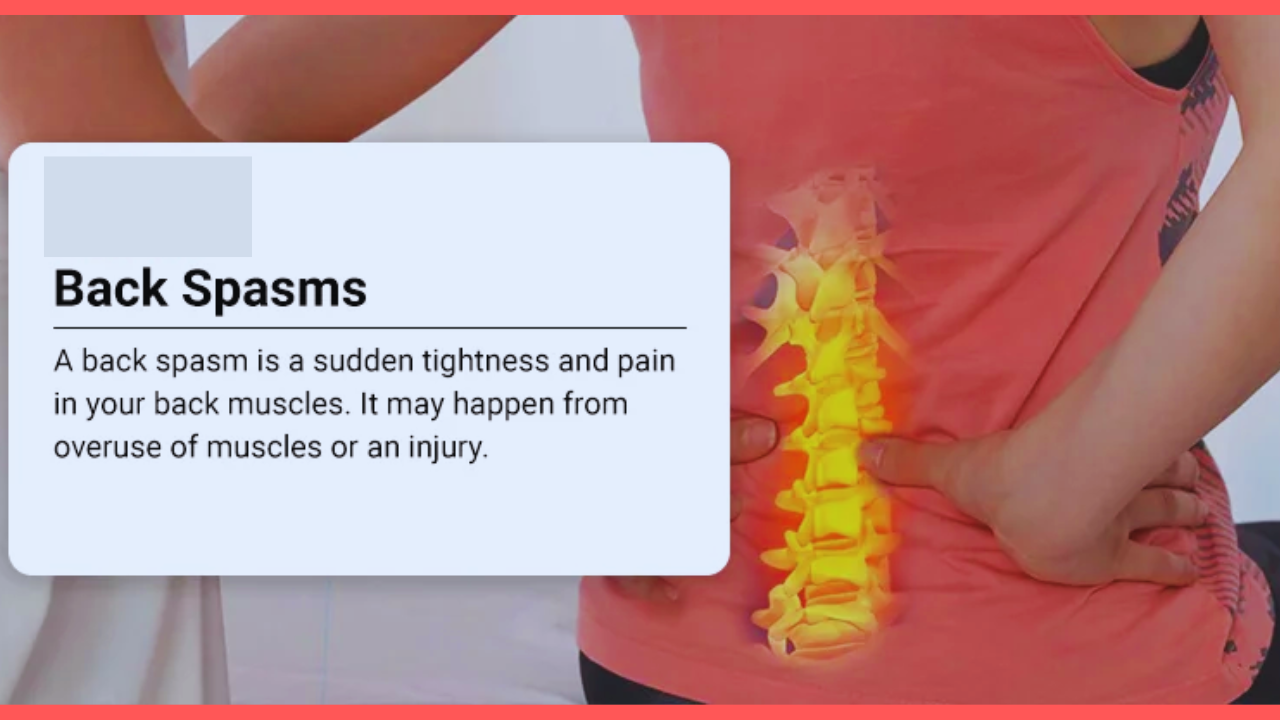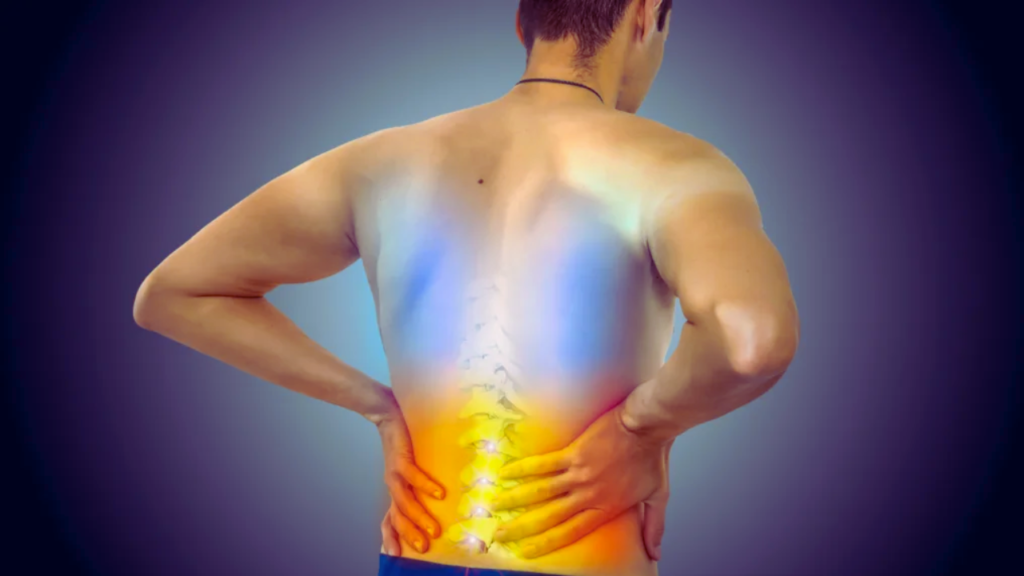
A healthy and strong back and a well-functioning spinal cord do more than help people live pain-free lives. They provide a solid framework for your shoulders and body, improve your posture, and enable smooth, flexible movement. However, if you aren’t cautious, back spasms can quickly disrupt this comfort.
Many individuals describe sciatica or low back pain as feeling like a tight muscle or a back spasm. Back spasms can range from a mild sensation, such as a small fist pressing into one area of your spine, to intense pain that makes walking, sitting, or standing difficult.
Treatment options vary from adjustments to posture and gentle stretching to steroid injections, physical therapy, and possibly surgery. If your spasms become so intense that they hinder your movement, it is crucial to seek medical attention immediately. In this article, I will explore the symptoms, causes, diagnosis, and treatment of back spasms.
What Is A Back Spasm?

A back spasm is an involuntary, sudden seizure, contraction or twinge in one or more spinal muscles. This type of spasm can affect any part of the back—upper, middle, or lower. However, they most frequently occur in the lower back. Around 80% of Americans experience lower back pain at one point in their lives.
Back spasms can vary from a mild ache or twitch to intense, debilitating and crippling pain. They might appear suddenly or begin as a minor twitch that becomes increasingly painful. Often, back spasms result from overuse of muscles or injuries. They can also signal more serious issues, such as a micro-tear near a spinal disc.
Factors such as lifting, bending, uncomfortable sleeping positions, or even standing and sitting can trigger back spasms, though the actual cause is not always clear. Many spasms arise from minor muscle injuries such as sprains. Some individuals experiencing back spasms often find it difficult to bend forward because of tightness and pain.
Back Spasms Symptoms

Back spasms can last anywhere from a few hours to several days. In more severe cases, they might persist for 6-8 weeks. However, the spasms and pain should gradually diminish, enabling you to resume your regular activities. Some common back muscle spasm symptoms are given below:
- You might experience weakness or numbness in your limbs.
- Bending your spine could become difficult.
- You may feel pain in one or both parts of your back.
- You might notice your arms or legs feeling weak.
- A tight feeling might develop in your back.
- Pulsing sensations and pain can occur in your lower back.
- You could face challenges with bladder and bowel control.
- After a spasm, you might experience intermittent cramping in your back or other areas of your body.
Back spasms can sometimes lead to pain in your hips and buttocks. When these spasms are intense, they might also bring nerve pain, tingling, or numbness that carries to one or both legs.
What Causes Back Spasms?
Back spasms can arise from several different causes. Some common back spasms causes are:
- Poor posture: Standing or sitting incorrectly can put stress on your back muscles.
- Minor injury: A sudden twist, fall, or bend can lead to a muscle strain or sprain, which might trigger a back spasm.
- Overuse of muscle: Engaging in prolonged, heavy, and repetitive lifting during sports or manual labor can strain and inflame your back muscles. This risk increases if you don’t allow enough time for rest and recovery.
- Lack of Nutrients: Lacking critical vitamins and minerals such as vitamin D, magnesium, and potassium can disrupt muscle function, leading to back pain and spasms.
- Anxiety and Stress: Anxiety and Stress can cause your neck and back muscles to tighten. This muscle tension can result in spasms and stiffness over time.
- Shortage of physical activity: Not getting enough daily physical activity can weaken your abdominal and back muscles. This increases the risk of reoccurring back pain or spasms.
- Ruptured disc: A herniated or ruptured disc happens when the disc compresses, breaks, and protrudes from the spine. This can limit your capability of movement or exercise, possibly leading to muscle weakness and later back spasms.
- Arthritis: Inflammatory arthritis affecting the spine, such as ankylosing spondylitis and osteoarthritis, can lead to painful back spasms. As with other chronic conditions, individuals with arthritis might reduce their physical activity, which can result in muscle weakness and further spasms.
- Spinal conditions: Spinal conditions like spondylolisthesis and spinal stenosis can lead to significant discomfort. Spondylolisthesis occurs when a section of the spine shifts out of place. On the other hand, spinal stenosis involves the narrowing of the spinal canal, putting pressure on the spinal cord or nerves. Both conditions can result in muscle spasms, back pain, stiffness, and inflammation.
- Fibromyalgia: Fibromyalgia is a long-term health condition that causes widespread sensitivity and pain throughout the body. Those with fibromyalgia frequently deal with muscle spasms as part of their symptoms.
What Steps Do Doctors Take to Diagnose A Back Spasm?
A doctor might request an X-ray to check for symptoms of arthritis or bone fractures. To get a clearer picture of muscles and other soft tissues, other diagnostic imaging, such as an MRI, might be used alongside the X-ray. These tests can also help spot any issues with blood flow or discs in the affected area.
Providing a detailed explanation of your symptoms can assist your doctor in making an accurate diagnosis. Share specifics such as when the spasms began, the intensity of your back pain, how frequently they happen, and what alleviates the discomfort.
Whether your spasms started after lifting heavy furniture, a sports injury, or taking medication, having these details can help your doctor identify the cause and recommend the right treatment for your spasms.
Back Spasms Treatment

Treating back spasms might involve home remedies or professional medical care. These treatments aim to ease your spasms and address the mechanical stresses that might have triggered them. Healthcare providers can also offer strategies to help you prevent future back spasms.
Here are some home remedies that might help with back spasms:
- Gentle stretches, like a mild spinal twist or a child’s pose, can help ease tension.
- Taking anti-inflammatory medications and analgesics, such as acetaminophen, can help reduce pain and inflammation.
- Applying heat and ice in fifteen to twenty-minute intervals may also provide relief.
- You can try a gentle lower back massage in your house to relieve tension. If that doesn’t work, consider seeing a healthcare expert for a deeper myofascial tissue massage. Just make sure to let them know about your spasms before they start.
- Focus on improving your posture, such as sitting and standing up straight, and ensuring you have proper back support when seated.
If these self-care methods don’t alleviate your back spasms, it might be time to consult a healthcare professional for further treatment. Medical options for treating back spasms include:
- Transcutaneous electrical neuromuscular stimulation (TENS)
- Physical therapy
- Lumbar surgery
- Chiropractic care
- Steroid injections
Injections and surgery are invasive and carry risks, so they should be considered only as a last resort for treating back spasms. People experiencing spasms need to avoid excessive walking or activities like bending, twisting, or lifting that might worsen the condition.
Most individuals find relief from back spasms through physical therapy or chiropractic care, which involves learning postures and exercises to ease lower back tightness. Minor back spasms often resolve on their own with a few weeks of rest. However, if anyone has injuries, the pain may persist longer. In that case, it’s important to consult a healthcare professional.
Concluding Words
Back spasms can arise from various causes. Mechanical changes in the spine might put extra stress on the muscle, while stress or anxiety can make your back feel tight. When you sense back spasms starting, you can try different home self-care techniques to address the issue.
If your back spasms are severe or persistent, it’s wise to seek assistance from a doctor or other healthcare professionals. Understanding the cause of your spasms and finding the best way to manage them can help you return to your usual activities safely and quickly.
